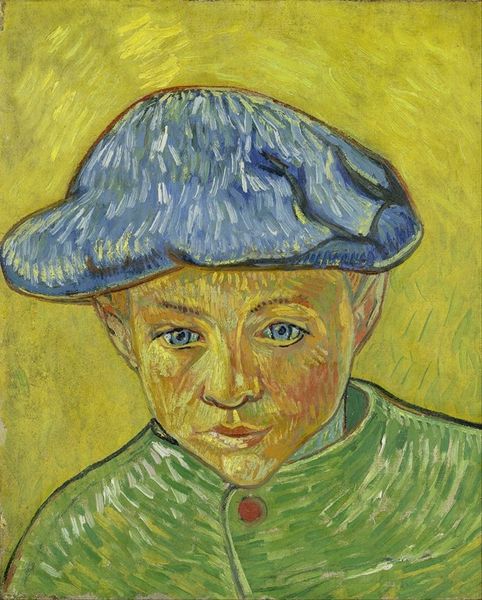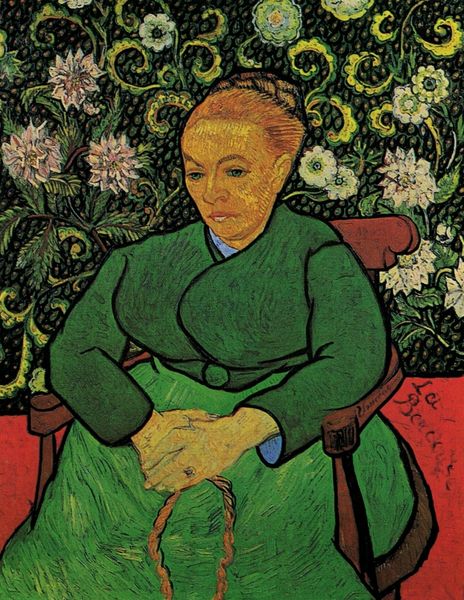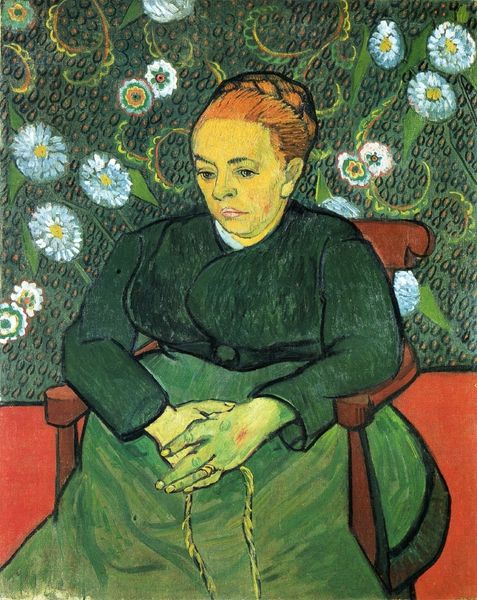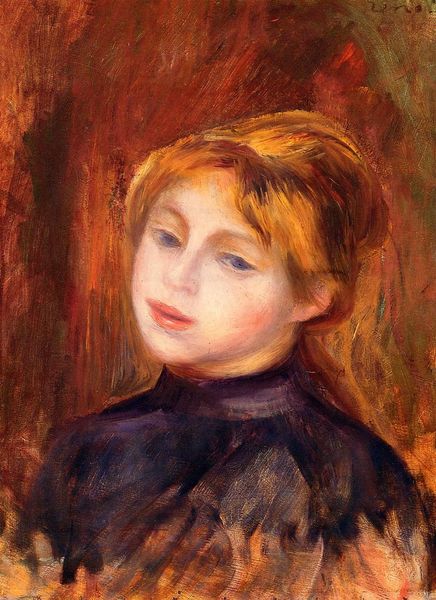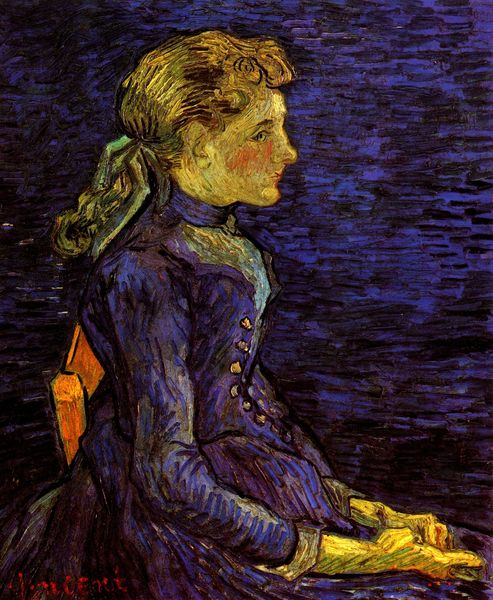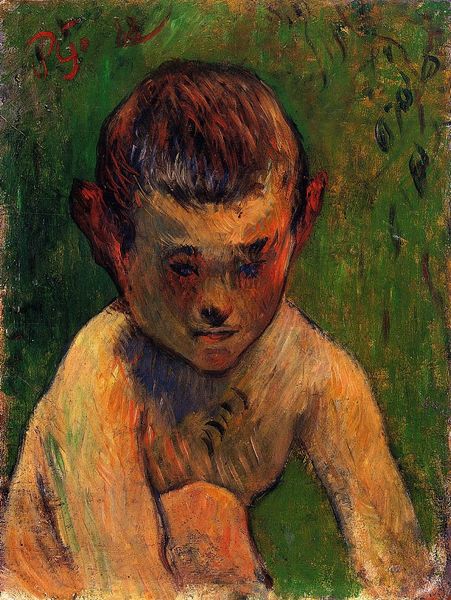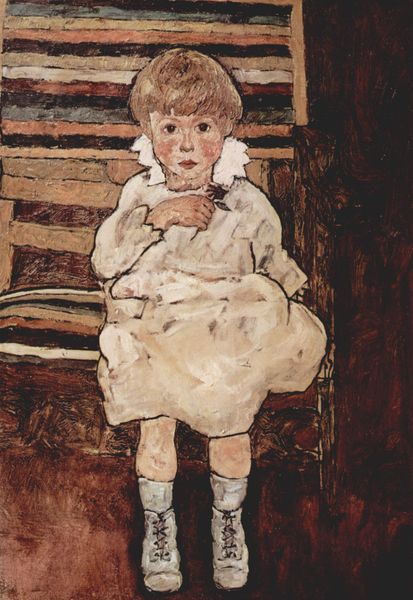
Portrait of Camille Roulin 1888
0:00
0:00
vincentvangogh
Philadelphia Museum of Art, Philadelphia, PA, US
painting, oil-paint, impasto
#
portrait
#
painting
#
oil-paint
#
impasto
#
genre-painting
#
post-impressionism
Dimensions: 35 x 43 cm
Copyright: Public domain
Editor: Here we have Van Gogh’s "Portrait of Camille Roulin," painted in 1888. The vibrant strokes of oil paint depicting a young boy... he looks so serious! Almost burdened. What do you make of this piece? Curator: Burdened is interesting! To me, Camille’s face isn't necessarily burdened but… contemplative, like a tiny philosopher lost in thought. You know, Van Gogh painted several members of the Roulin family, his neighbors in Arles. This impasto technique – see how thick the paint is, almost sculptural? It brings a raw emotional intensity. I see vulnerability there too, beneath the bold colors and brushstrokes. What colours speak to you? Editor: The yellows, definitely. They’re so bright, yet they feel almost sickly against his pale skin. There’s a dissonance. Is it meant to unsettle us? Curator: Precisely! That clashing dissonance is pure Van Gogh. He’s not just painting what he sees; he’s conveying an emotional truth. And think about it, portraits are about more than capturing likeness – they’re about understanding the sitter, peeling back layers to their very core. Does it challenge how you view traditional portraiture? Editor: Absolutely. It’s less about idealization and more about... well, raw feeling, as you said. This portrait feels so alive. Curator: And it asks us to feel something, too. To connect with Camille, this little person from over a century ago. Isn't it astonishing how a painting can still stir something within us, across all that time? Editor: It really is. I hadn't considered the vulnerability before. I appreciate the nuanced emotion that impasto evokes here; seeing Van Gogh’s intent is a fascinating experience. Curator: Indeed! Exploring such connections deepens our appreciation of the subject of the artist’s labour.
Comments
No comments
Be the first to comment and join the conversation on the ultimate creative platform.
